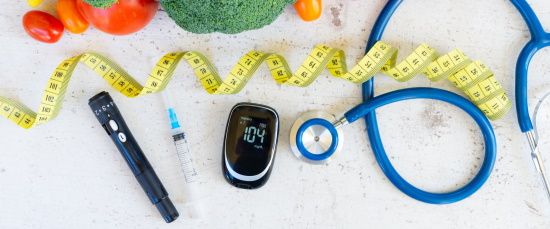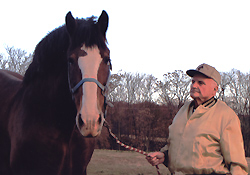Told You Have Prediabetes?


Richard Stansbury was going about his usual chores on his farm in Mount Airy, Maryland with no idea of the cardiac emergency that lay ahead. Richard's daughter, Catherine, shares his remarkable story below.
During a routine follow-up visit to my dad's primary care physician for diabetes management, it was revealed that he was at risk of having a silent MI, which is a type of heart attack common among diabetics that presents no obvious symptoms. Looking back, what we now know were symptoms of real cardiac problems were being dismissed by my dad as signs that he was getting older.
In the weeks following this warning from his doctor, a trip to the cardiologist, followed by a failed stress test and a cardiac catheterization, led our family to hear the most disappointing words: "Your dad is not a candidate for a stent repair." He needed open heart surgery to reduce his risk of heart attack.
After receiving this recommendation, everything seemed to go in a downward spiral, leaving my family with no answers to some very big questions. Who would take care of my mom who happened to be coping with her own health issues? Who would care for our 12 Clydesdales, 20 barn cats, and basset hound, let alone perform the day-to-day upkeep of 120 acres of farmland? My dad was no ordinary man, he was the heart, strength and backbone of our entire family. He was the man who kept EVERYTHING running.
We were referred to UMMC's Heart Center and met with a cardiac surgeon. He exudes a quiet confidence, which, for our family, transferred almost immediately. The surgeon took all the time necessary to answer every little question and concern we had. He told our dad exactly what to expect regarding each procedure, as well as the how many days he would need to recover. Best of all, he managed to make all of this information completely understandable, even laughing when my dad referred to the daVinci robot as "the Sputnik."
My dad was presented with two options: coronary artery bypass grafting (CABG) or a minimally invasive robotic surgery procedure. We were told that the minimally invasive operation would be performed through tiny holes without opening the chest. The surgeon was also careful to explain that there are certain health pre-requisites that patients must meet to qualify for this particular surgery.
Ultimately, a robotic completely endoscopic double-heart bypass procedure was carried out. My dad had only four very small wounds on the chest. Four days later a stent was implanted in a third blocked vessel. The heart surgeons and cardiologists called this a hybrid intervention, and it seemed to be a great alternative to opening the chest for surgery.
The day of surgery went exactly as the cardiac surgeon had explained, and my dad was out of the operating room that afternoon. He spent one day in the ICU, followed by a five-day total hospital stay. A few Band-Aids were all that remained as evidence of this life-changing procedure. He went to the barn at his farm a week after the procedure and was on the tractor two weeks after his surgery.
The surgeon and the rest of the UMMC staff made what might otherwise have been a disastrous experience quite manageable for our family. Because of their expertise, our dad is now better than ever and can do things that he hasn't been able to do in years.
